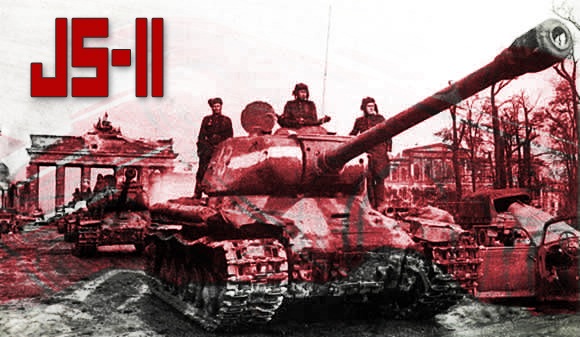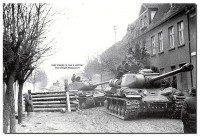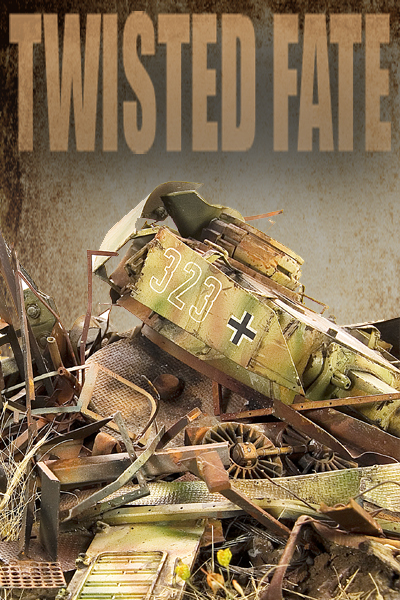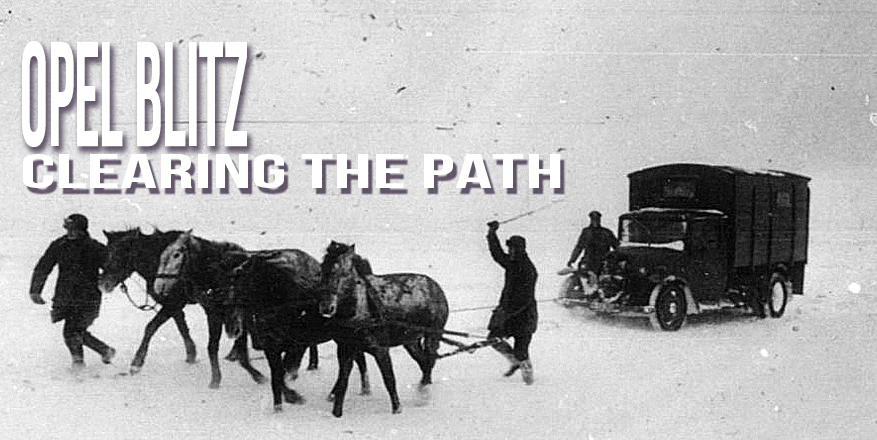 The IS-2 tank first saw combat in the spring of 1944 and were assigned to separate heavy tank regiments, normally of 21 tanks each. These regiments were used to reinforce the most important attack sectors during major offensive operations. Tactically, they were employed as breakthrough tanks. Their role was to support infantry in the assault, using their large guns to destroy bunkers, buildings, dug-in crew-served weapons, and other ’soft’ targets. They were also capable of taking on any German AFV if the need arose. Once a breakthrough was achieved, lighter, more mobile T-34s would take over the exploitation. The IS-2 weighed about the same as a German Panther, and was lighter than the German heavy tanks, the Tiger series. It was slightly lower than both. A major weakness was the two-part ammunition, which slowed
The IS-2 tank first saw combat in the spring of 1944 and were assigned to separate heavy tank regiments, normally of 21 tanks each. These regiments were used to reinforce the most important attack sectors during major offensive operations. Tactically, they were employed as breakthrough tanks. Their role was to support infantry in the assault, using their large guns to destroy bunkers, buildings, dug-in crew-served weapons, and other ’soft’ targets. They were also capable of taking on any German AFV if the need arose. Once a breakthrough was achieved, lighter, more mobile T-34s would take over the exploitation. The IS-2 weighed about the same as a German Panther, and was lighter than the German heavy tanks, the Tiger series. It was slightly lower than both. A major weakness was the two-part ammunition, which slowed  the rate of fire considerably. A second weakness was the very limited ammunition supply of only 28 rounds. This was the price paid by the small size of the design. One of the IS-2’s most notable engagements took place during the fighting in August 1944 to establish a bridgehead over the river Vistula around the town of Sandomierz.. This was the first time the IS-2 had come up against the fearsome Tiger II. During the engagement on August 13, the 71st Independent Heavy Tank Regiment’s eleven IS-2s blocked an attack by fourteen Tiger IIs of the 105th Heavy Panzer Regiment.
the rate of fire considerably. A second weakness was the very limited ammunition supply of only 28 rounds. This was the price paid by the small size of the design. One of the IS-2’s most notable engagements took place during the fighting in August 1944 to establish a bridgehead over the river Vistula around the town of Sandomierz.. This was the first time the IS-2 had come up against the fearsome Tiger II. During the engagement on August 13, the 71st Independent Heavy Tank Regiment’s eleven IS-2s blocked an attack by fourteen Tiger IIs of the 105th Heavy Panzer Regiment.
Twisted Fate
 The Caterpillar D7 series medium bulldozer began service with the U.S. military during World War II. With upgrades and changes, it has been a workhorse for the U.S. Military for over fifty years, fulfilling its primary earth moving role as well as a host of other roles discovered for it, for example mine clearing with a special flail adapter kit. As is so often the case, the idea for this project is based upon a photograph showing a D7 Dozer in action during World War II clearing the wreckage of a Panzer IV from the roadway.
The Caterpillar D7 series medium bulldozer began service with the U.S. military during World War II. With upgrades and changes, it has been a workhorse for the U.S. Military for over fifty years, fulfilling its primary earth moving role as well as a host of other roles discovered for it, for example mine clearing with a special flail adapter kit. As is so often the case, the idea for this project is based upon a photograph showing a D7 Dozer in action during World War II clearing the wreckage of a Panzer IV from the roadway.

Opel Blitz – Snow Plow
 In the 3-ton (or medium) of transport trucks the major and most successful design was the Opel Blitz. This was a 1938 design from Opel (the German subsidiary then, as now, of General Motors) and was quite conventional in layout. The Opel Model S3.6-36, to give its maker’s designation, was a 4×2 vehicle with pressed steel cab and bonnet. Suspension was by conventional leaf springs. During its war production run, there were many special purpose variants produced; over 100 different types were recorded.
In the 3-ton (or medium) of transport trucks the major and most successful design was the Opel Blitz. This was a 1938 design from Opel (the German subsidiary then, as now, of General Motors) and was quite conventional in layout. The Opel Model S3.6-36, to give its maker’s designation, was a 4×2 vehicle with pressed steel cab and bonnet. Suspension was by conventional leaf springs. During its war production run, there were many special purpose variants produced; over 100 different types were recorded.
